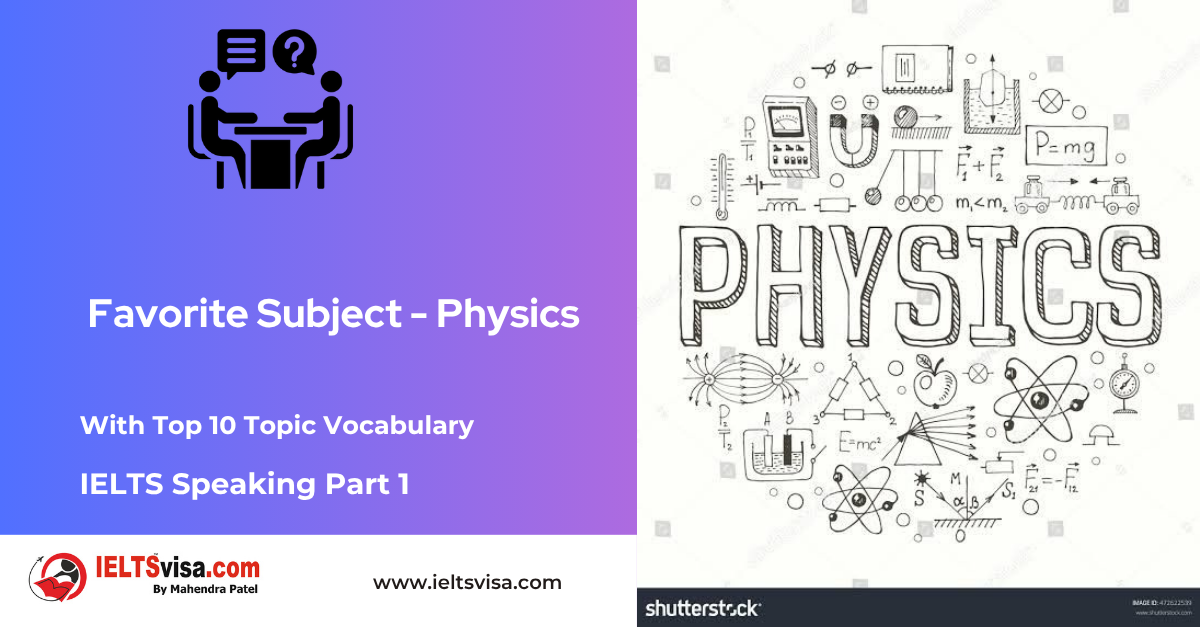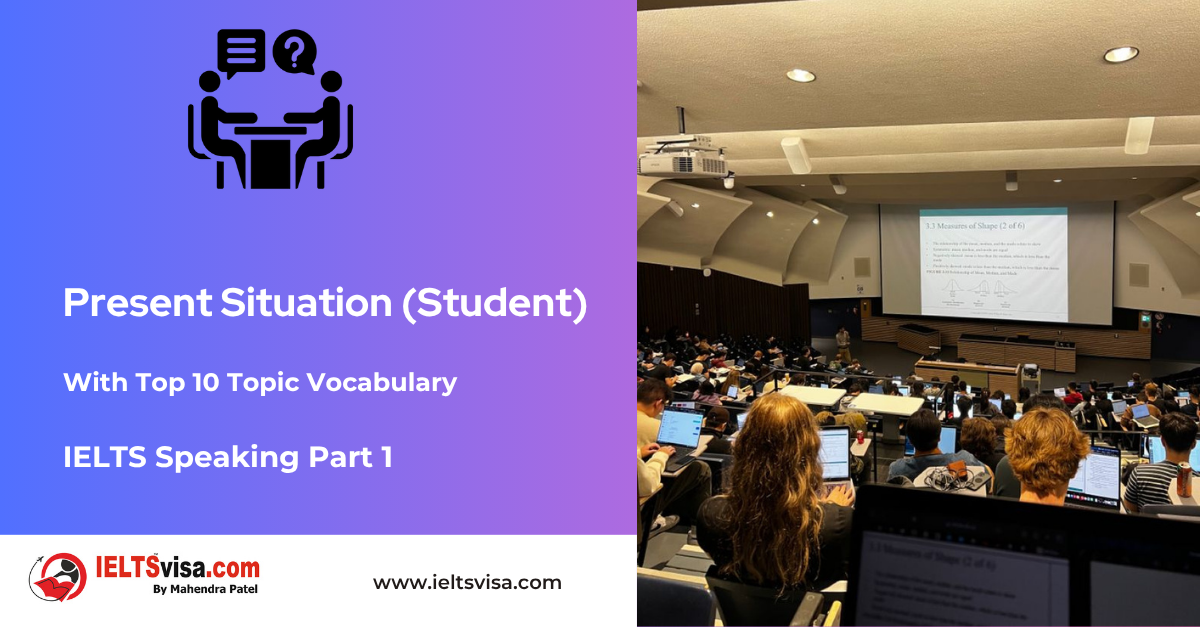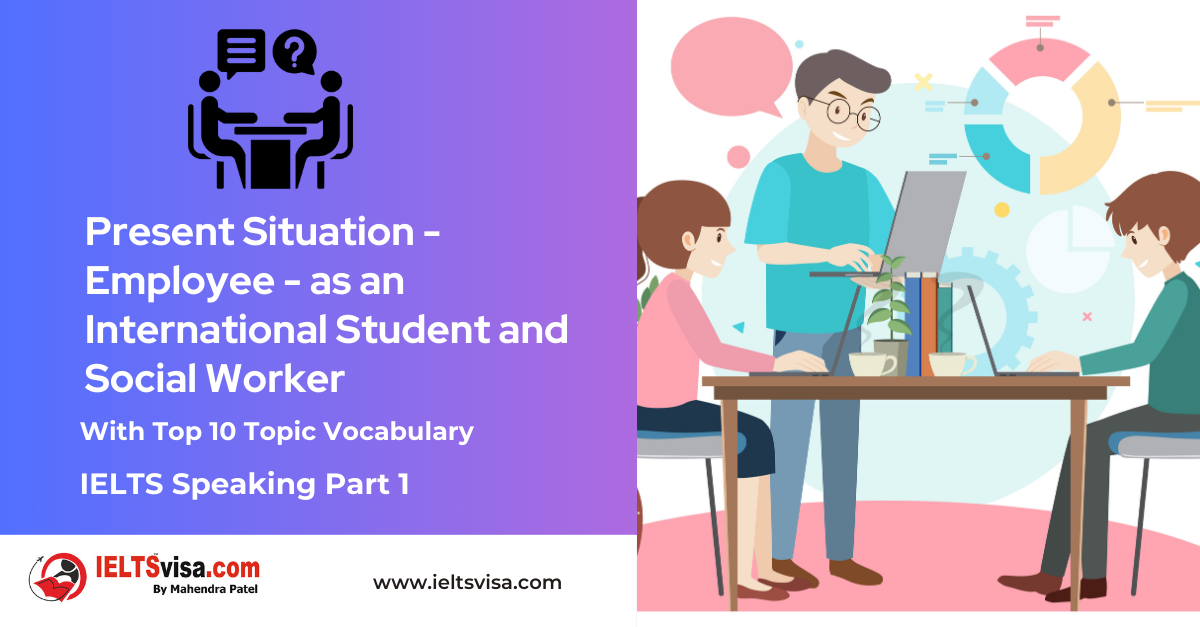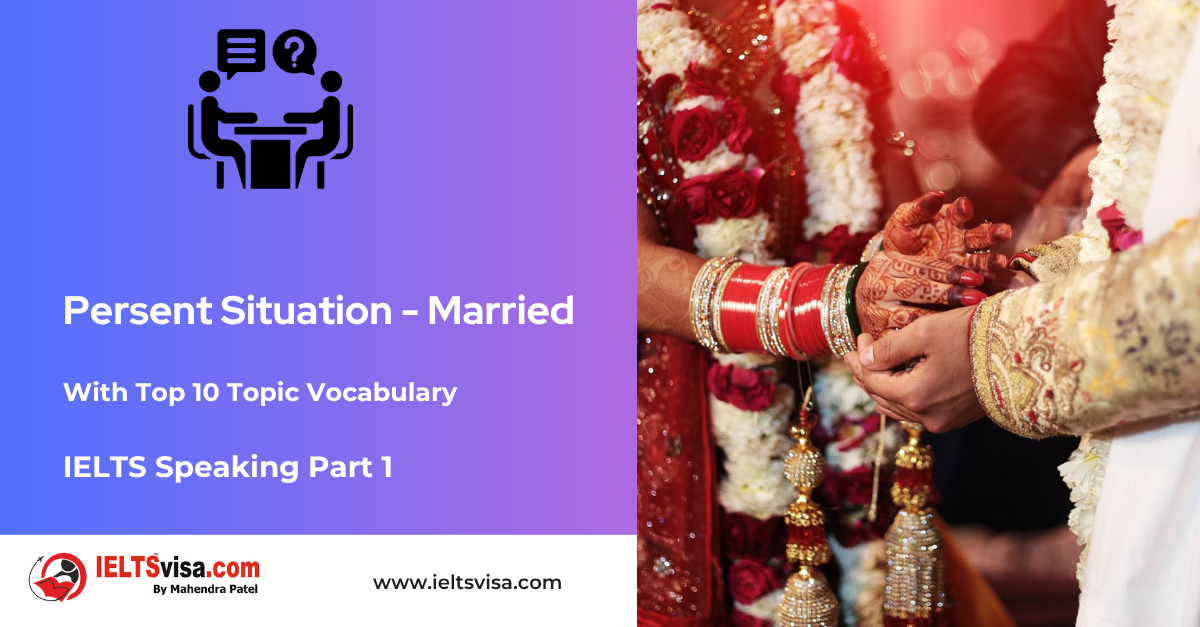Object - Definition, Types, and Examples
Grammar for IELTS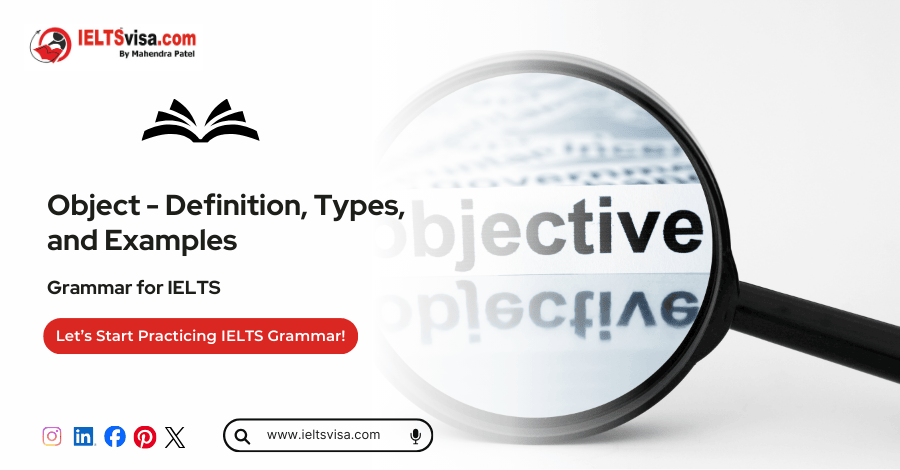
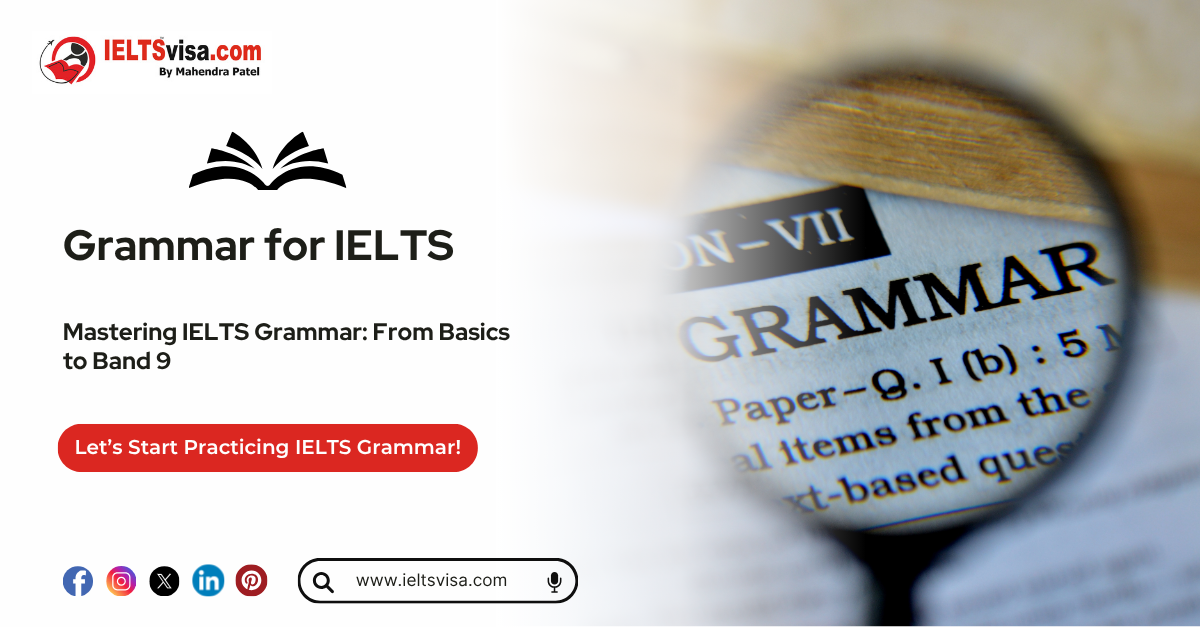
Object – Definition, Types, and Examples
Understanding the concept of objects in English grammar is fundamental to constructing meaningful and grammatically correct sentences. Objects are an essential part of sentence structure, providing context and completing the meaning of verbs and prepositions. In this comprehensive guide, we will explore what objects are, their types, functions, and examples, along with practical exercises and frequently asked questions to solidify your understanding.
Table of Contents
- What Is an Object? – Meaning and Definition
- Functions of an Object
-
- An object of a Verb
- An object of a Preposition
-
- Types of Objects
-
- Direct Object
- Indirect Object
-
- How to Place Objects in a Sentence? – Examples
-
- Examples of Direct Objects
- Examples of Indirect Objects
-
- Check Your Understanding of Objects in Sentences
- Frequently Asked Questions on Objects in English Grammar
What Is an Object? – Meaning and Definition
An object in a sentence is the word, phrase, or pronoun that receives the action performed by the subject. It provides additional information and completes the meaning of a verb or preposition. In simpler terms, the object tells us “what” or “whom” the action is being done to or for.
Definitions:
-
-
- Oxford Learner’s Dictionary: An object is “a noun, noun phrase, or pronoun that refers to a person or thing affected by the action of the verb (called the direct object), or that the action is done to or for (called the indirect object).”
- Cambridge Dictionary: An object is “a noun or noun phrase that is affected by the action of a verb or that follows a preposition.”
-
Functions of an Object
Objects serve two primary functions in a sentence:
-
- Object of a Verb
- Object of a Preposition
Object of a Verb
An object that directly follows a verb and receives the action is called the object of a verb. It provides the answer to questions like “What?” or “Whom?”
Examples:
-
- She bought a book. (What did she buy? – A book)
- He called his friend. (Whom did he call? – His friend)
- They found the missing keys. (What did they find? – The missing keys)
Object of a Preposition
An object that follows a preposition in a prepositional phrase is called the object of a preposition. It provides additional details about place, time, or manner.
Examples:
-
- She is sitting on the chair. (What is the preposition? – On; What follows it? – The chair)
- He is waiting for the train. (What is the preposition? – For; What follows it? – The train)
- They walked through the park. (What is the preposition? – Through; What follows it? – The park)
Types of Objects
Objects can be categorized into two main types:
1. Direct Object
2. Indirect Object
Direct Object
A direct object answers the question “What?” or “Whom?” after the verb. It represents the thing or person directly receiving the action.
Characteristics of Direct Objects:
-
-
- Typically follows the verb directly.
- Can be a noun, pronoun, or noun phrase.
-
Examples of Direct Objects:
1. She baked a cake. (What did she bake? – A cake)
2. They watched a movie. (What did they watch? – A movie)
3. He fixed the car. (What did he fix? – The car)
Sentence Patterns with Direct Objects:
-
-
- SVO: Subject + Verb + Object (e.g., She read a book.)
- SVOC: Subject + Verb + Object + Complement (e.g., They painted the wall blue.)
- SVOA: Subject + Verb + Object + Adjunct (e.g., She placed the book on the table.)
-
Indirect Object
An indirect object answers the questions “To whom?” or “For whom?” the action is performed. It represents the recipient of the direct object.
Characteristics of Indirect Objects:
-
-
- Often placed between the verb and the direct object.
- Can be rephrased using a prepositional phrase.
-
Examples of Indirect Objects:
1. He gave his sister a gift. (To whom did he give the gift? – His sister)
2. She told us a story. (To whom did she tell the story? – Us)
3. They sent their friends an invitation. (To whom did they send the invitation? – Their friends)
Sentence Patterns with Indirect Objects:
-
-
- SVIODO: Subject + Verb + Indirect Object + Direct Object (e.g., She gave her friend a present.)
- ASVIODO: Adjunct + subject + Verb + Indirect Object + Direct Object (e.g., Yesterday, he showed me his project.)
-
How to Place Objects in a Sentence? – Examples
Understanding how to correctly place objects in a sentence is essential for clear communication. Below are examples to illustrate the placement of direct and indirect objects.
Examples of Direct Objects:
1. The chef prepared a delicious meal. (Direct Object: A delicious meal)
2. We visited the museum last weekend. (Direct Object: The museum)
3. She wrote a letter to her pen pal. (Direct Object: A letter)
Examples of Indirect Objects:
1. He gave his teacher a thank-you card. (Indirect Object: His teacher; Direct Object: A thank-you card)
2. She brought her children new toys. (Indirect Object: Her children; Direct Object: New toys)
3. I told him the good news. (Indirect Object: Him; Direct Object: The good news)
Check Your Understanding of Objects in Sentences
Identify the objects in the following sentences and specify whether they are direct or indirect:
1. Maria gave her brother a gift on his birthday.
2. The kids painted the wall blue.
3. The teacher showed the class a new experiment.
4. I sent my friend a postcard from Paris.
5. They bought a house in the countryside.
Answers:
1. Her brother – Indirect object; A gift – Direct object
2. The wall – Direct object
3. The class – Indirect object; A new experiment – Direct object
4. My friend – Indirect object; A postcard – Direct object
5. A house – Direct object
Frequently Asked Questions on Object in English Grammar
Q1. What is an object in grammar?
An object is a word or phrase in a sentence that receives the action of the verb or follows a preposition. It can be a noun, pronoun, or noun phrase.
Q2. What are the types of objects?
The two main types of objects are:
-
- Direct Object – Receives the action directly.
- Indirect Object – Indicates to whom or for whom the action is performed.
Q3. How do I identify the object in a sentence?
To identify a direct object, ask “What?” or “Whom?” after the verb. To identify an indirect object, ask “To whom?” or “For whom?”
Q4. Can a sentence have both a direct and indirect object?
Yes, many sentences contain both. For example: She gave her friend a gift. (Her friend is the indirect object; A gift is the direct object.)
Q5. Give examples of sentences with objects.
-
- He wrote a letter. (Direct Object: A letter)
- She told me a story. (Indirect Object: Me; Direct Object: A story)
- They are waiting for the bus. (Object of Preposition: The bus)

Our Books
Master IELTS Speaking Part 1
IELTS Writing Task 1 Book
IELTS Writing Task 2 Book
Practice IELTS Other Modules
IELTS Listening
The IELTS Listening test assesses how well you can understand spoken English in various contexts. It lasts about 30 minutes and is divided into four sections with a total of 40 questions. The listening tasks become increasingly difficult as the test progresses.
IELTS Academic Reading
The IELTS Academic Reading section assesses your ability to understand and interpret a variety of texts in academic settings. It is designed to evaluate a range of reading skills, including skimming for gist, reading for main ideas, reading for detail, understanding inferences, and recognizing a writer's opinions and arguments.
IELTS Speaking
The IELTS Speaking test assesses your ability to communicate in English on everyday topics. It lasts 11-14 minutes and consists of three parts: introduction, cue card, and a discussion based on the cue card topic.
IELTS General Reading
IELTS General Reading tests your ability to understand and interpret various types of texts. Here are some key areas and types of content you can expect to encounter in the reading section, along with tips for effective preparation.
IELTS Academic Writing Task 1
In IELTS Academic Writing Task 1, you are presented with a visual representation of information, such as graphs, charts, tables, or diagrams, and you are required to summarize, compare, or explain the data in your own words.
IELTS General Writing Task 1
In IELTS General Writing Task 1, you are required to write a letter based on a given situation. The letter can be formal, semi-formal, or informal, depending on the prompt. Here’s a breakdown of the key components to include in your letter
IELTS Academic Writing Task 2
In IELTS Academic Writing Task 2, you are required to write an essay in response to a question or topic. Here’s a guide to help you understand the essential elements of this task
IELTS Exam Tips
To succeed in the IELTS exam, practice regularly, familiarize yourself with the test format, improve your vocabulary, develop time management skills, and take mock tests to build confidence.
Grammer for IELTS
Grammar is the foundation of effective communication in English. Understanding tense usage, subject-verb agreement, and sentence structure enhances clarity and coherence in writing and speaking.
Vocabulary for IELTS
Vocabulary plays a crucial role in the IELTS (International English Language Testing System) exam, especially in the Speaking and Writing sections. Here’s an overview of why vocabulary is important and how it impacts your performance
RECENT IELTS SAMPLES QUESTIONS AND ANSWERS
IELTS Speaking Part 1 – Favourite Sujbect – Physics
IELTS Speaking Part 1 - Favourite Sujbect - Physics Q: What is your favourite subject? A: My favourite subject...
IELTS Speaking Part 1 – Present Situation (Student)
IELTS Speaking Part 1 - Present Situation (Student) Q1: Are you a student or do you work?A: I’m a full-time...
IELTS Speaking Part 1 – Present Situation – Employee – as an International Student and Social Worker
IELTS Speaking Part 1 - Present Situation - Employee - as an International Student and Social Worker Q1: Are...
IELTS Speaking Part 1 – Persent Situation – Employee- as an Electric Engineer
IELTS Speaking Part 1 - Persent Situation - Employee- as an Electric Engineer Q1: What do you do for a...
IELTS Speaking Part 1 – Persent Situation – Employee – as an Software Engineer
IELTS Speaking Part 1 - Persent Situation - Employee - as an Software Engineer Q1: What do you do for a...
IELTS Speaking Part 1 – Persent Situation – Married
IELTS Speaking Part 1 - Persent Situation - Married Q1: Are you married?A: Yes, I am married. My spouse and I...

